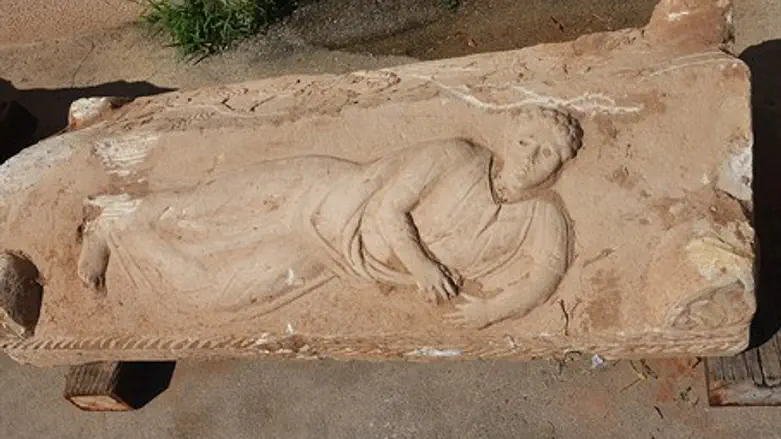
An impressive 1,800 year-old stone sarcophagus was discovered at a building site in a new neighborhood currently going up in Ashkelon, the Israel Antiquities Authority said Thursday.
It was found early Wednesday morning during a joint operation by inspectors of the IAA’s Unit for the Prevention of Antiquities Robbery, the Southern District of the IAA, and patrol officers and detectives from the Ashkelon police station.
The sarcophagi is one of the rarest ever discovered in Israel. The coffin, which is made of hard limestone, weighs 2 tons and is 2.5 meters long, is sculpted on all sides. A life-size figure of a person is carved on the sarcophagus’ lid.
The sarcophagus, however, was damaged, after being repeatedly struck by a tractor in different places, scarring the stone and damaging the decorations sculpted by an artist on its sides.
The irreparable damage was caused by contractors who encountered the impressive sarcophagus during the course of their work. They decided to hide it, pulled it out of the ground with a tractor, concealed it beneath a stack of sheet metal and boards and poured a concrete floor in the lot so as to conceal any evidence of the existence of the antiquities site.
The IAA's Unit for the Prevention of Antiquities Robbery received information about the unlawful activities at the construction site and led the nighttime search where they discovered the hidden sarcophagus and its lid.
Five Palestinian construction workers from Hevron were detained, as were two buildings contractors from Ashkelon. The contractors were questioned under caution on suspicion of not reporting an ancient discovery and on suspicion of damaging an antiquities site.
“This is an extremely serious case of damage to a rare antiquity of unprecedented artistic, historical and cultural importance," said Amir Ganor, head of the Inspection Department at the IAA.
According to Ganor, “The proper way to operate in an ancient and important historic city such as Ashkelon is with transparency, openness and close cooperation between the property owners and the IAA."
"Only in this way will the development of the city be possible while protecting public assets, for the common good,” Ganor added.
Dr. Gabi Mazor, a retired archaeologist from the IAA described the scene on the sarcophagus, which included a Roman figure in a tunic, wreaths and images of bulls' heads, naked Cupis, and the head of the monstrous female figure Medusa.
According to Mazor, “Such sarcophagi were usually placed in or next to a family mausoleum. The high level of decoration attested to the family’s affluence, which judging by the depicted motifs was probably not Jewish."